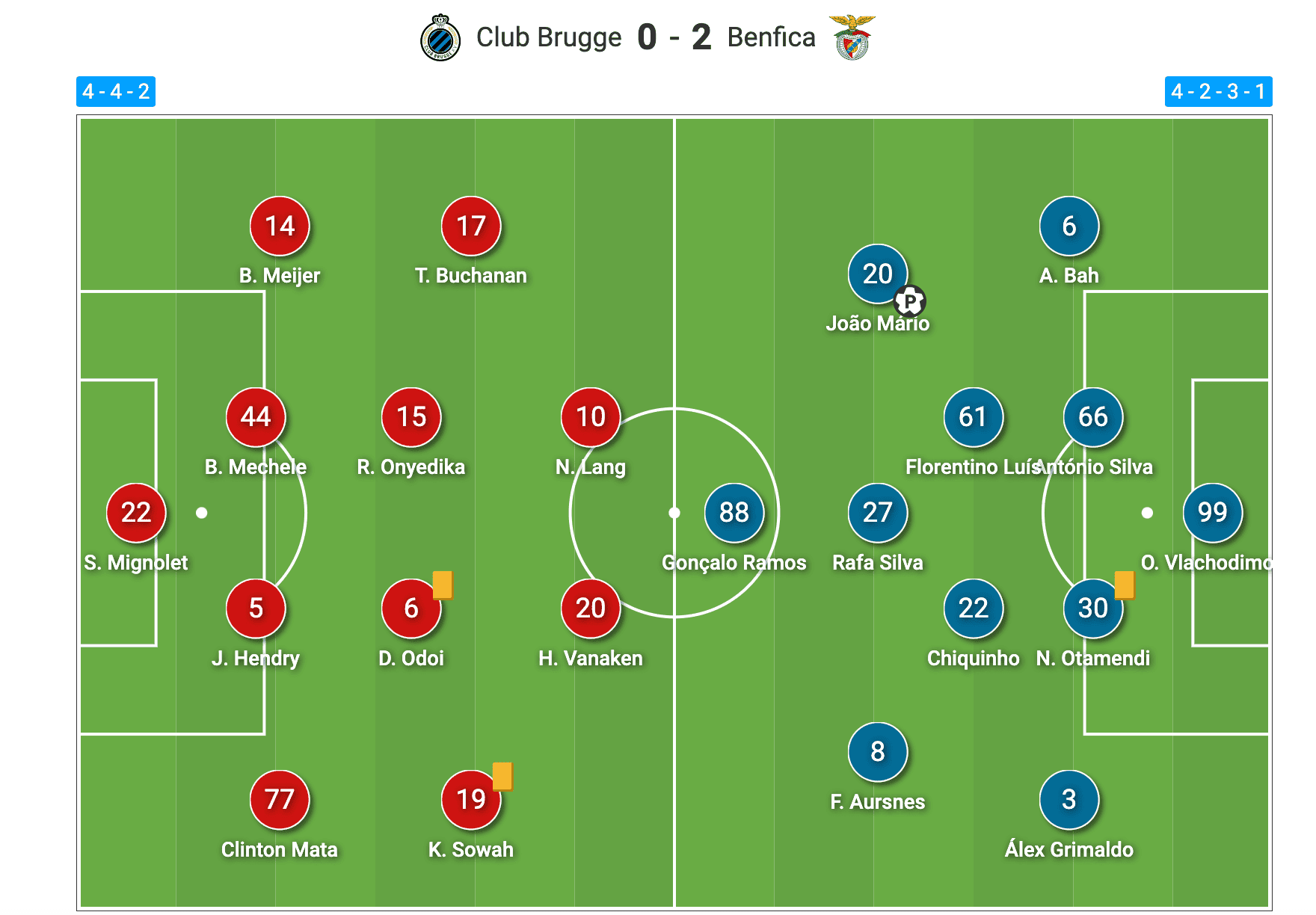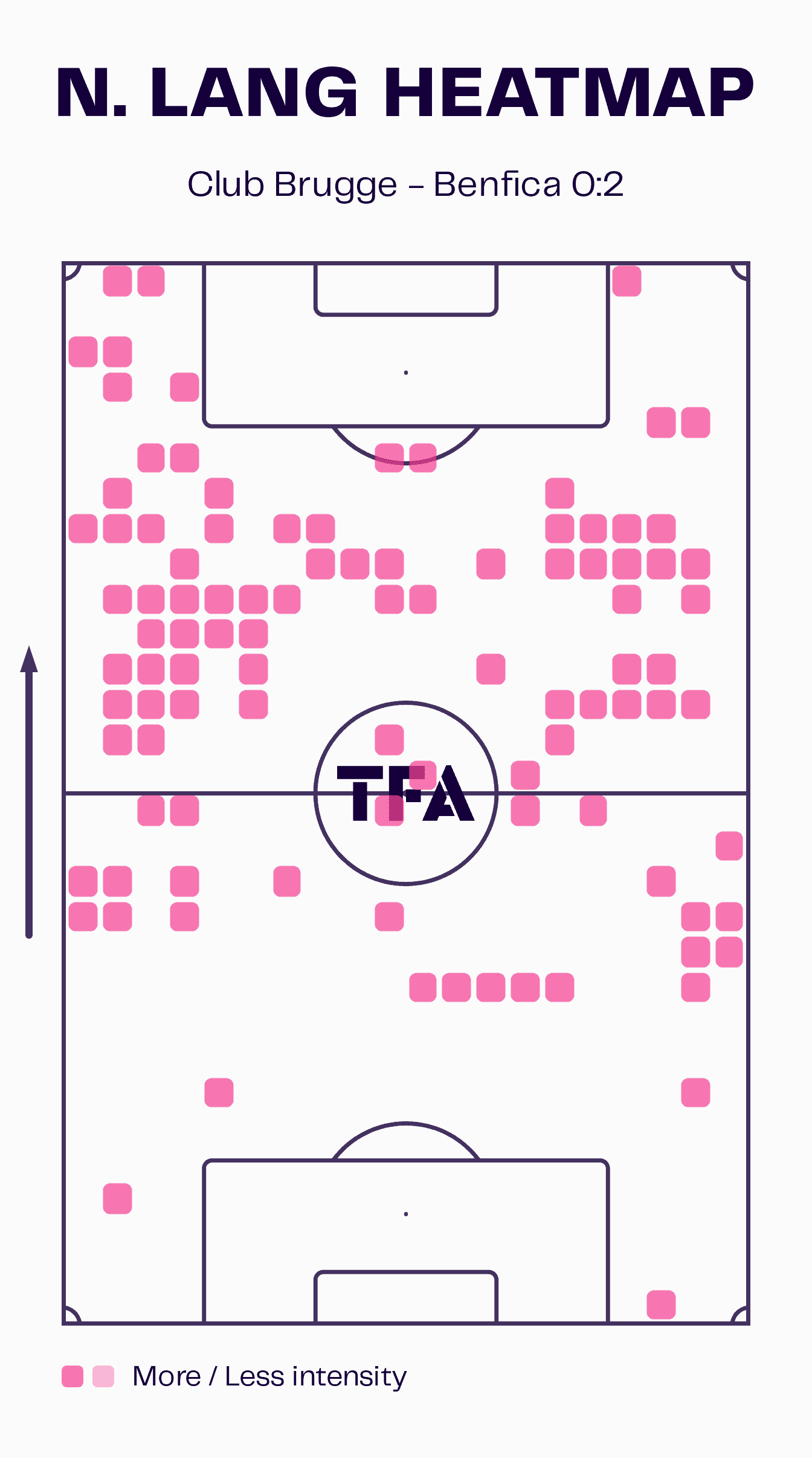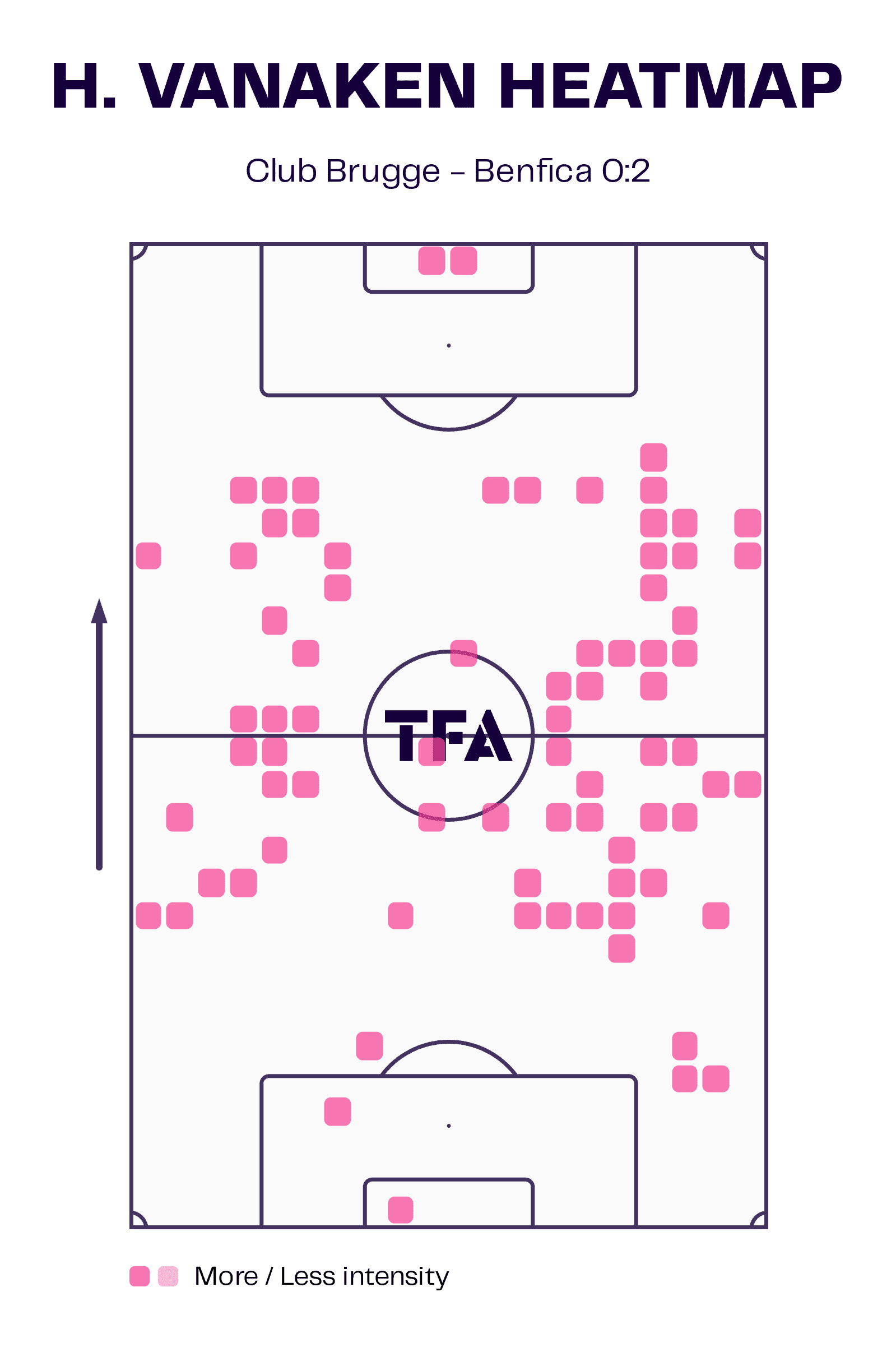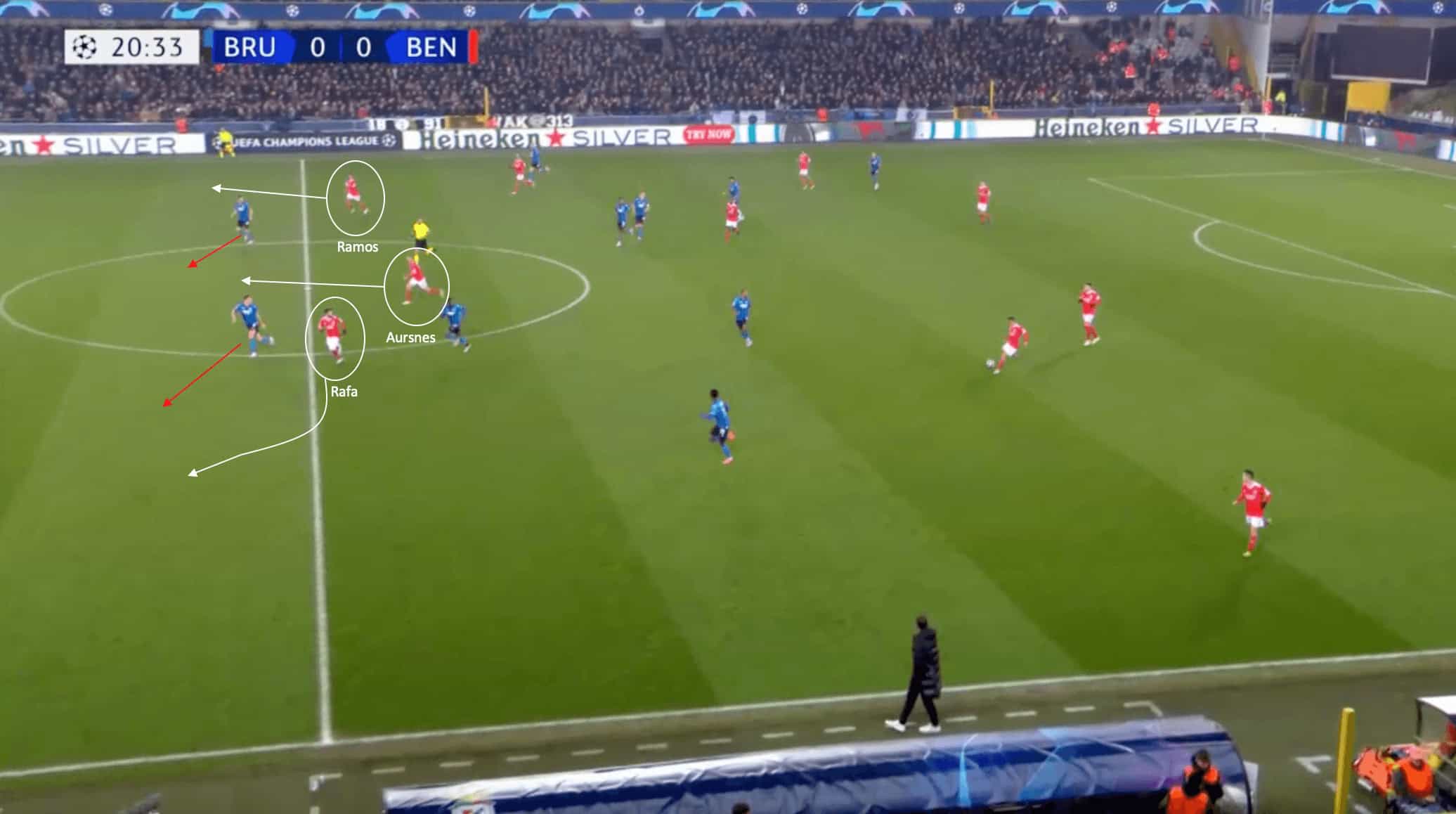In one of the more interesting ties of the UEFA Champions League round of 16 matchups, Belgian champions Club Brugge face off against Portuguese powerhouses SL Benfica. Since Scott Parker took over the Belgian giants at the beginning of January, they have not been in the greatest form, with only one win since that time. However, they have also only lost once, with the majority of their recent matches ending in draws. On the flip side, Roger Schmidt has his Benfica side flying, with the club five points clear of Porto in the Primeira Liga. The Portuguese giants also went into this tie as group winners, after topping a group that contained Maccabi Haifa, PSG, and Juventus.
The first leg in Bruges was a fascinating encounter, with Benfica coming out of the match 2-0 winners after goals from João Mário (P), and David Neres, with Club Brugge having it all to do in the second leg in Lisbon. There also was a few things to take out of this matchup from a tactical perspective from both sides, with this scout report and tactical analysis breaking these tactics down in more detail.
Lineups

For Club Brugge, Scott Parker opted for a 4-2-3-1/ 4-4-2 formation, with Club Brugge stalwart and former Liverpool goalkeeper Simon Mignolet starting in goal. The back four from left to right was Bjorn Meijer, Brandon Mechele, Jack Hendry and former Angolan international Clinton Mata. Moving up into midfield, the double pivot consisted of Raphael Onyedika and Denis Odoi. Parker opted for no true number nine to start this match, with the attacking four consisting of Tajon Buchanan, captain Hans Vanaken, Kamal Sowah, and Dutch international Noa Lang. For parts of this match, Lang and Vanaken played as the two forwards, with the formation altering to a 4-4-2. This tactic of no true forward hurt the Belgians, as this analysis will show shortly.
On the opposite side, Roger Schmidt matched the 4-2-3-1 of Club Brugge, with Odisseas Vlachodimos starting in goal. From left to right, the Portuguese giants’ back four was Alejandro Grimaldo, Nicolás Otamendi, 19-year-old Portugal international António Silvam, and Alexander Bah. Chiquinho and Florentino were tasked with anchoring the midfield, with Fredrik Aursnes, Rafa Silva, and João Mário playing ahead of them in attacking midfield. Starting up top for the Portuguese side was the talented 21-year-old striker Gonçalo Ramos.
Lack of a true number nine hurts Parker’s side’s chance creation and ball progression
The first tactical trend that we will look at from this match is the interchanging centre-forward roles of Noa Lang and Hans Vanaken. From the start, Scott Parker opted to not play a true number nine, with former Barcelona youth product Ferran Jutglà and Ukrainian international and record signing Roman Yaremchuk starting on the bench. The impact of no striker was felt, with the Belgians only having 4 shots the whole match, with only 1 being on target.

The image above displays Noa Lang’s heat map from the match against Benfica, and we can quite clearly see the lack of impact that Lang had in and around the 18-yard box. While Benfica did well from a defensive standpoint, one can argue that having a true centre-forward who is able to position well and find spaces in defences in and around the penalty box would have given them more chances on goal. For the most part, Lang had to drop into deeper positions to receive possession and find space to get on the ball, with Vanaken then looking to occupy the forward line.

Moving to the Belgian international, Vanaken also struggled when trying to find spaces in and around the penalty box. Like Lang, he also had to settle with dropping into deeper positions to find space on the ball, which in turn, negated the presence of a centre-forward for the Belgian champions. Also, in the case of both Lang and Vanaken, neither of the two are true strikers, which means they lack the positioning ability and manoeuvring in the box to find vacant spaces to receive possession that a centre-forward would. As this tactical analysis and scout report moves on, we will show some examples of this in the match, emphasising the impact this had on Club Brugge’s chance creation.

The image above shows the problem that Club Brugge experienced with the lack of a true centre-forward in the starting lineup. The two “forward” players, Lang and Vanaken, are occupying much deeper positions, with Lang dropping into the defensive half to get on the ball, and Vanaken operating in more of a number 10 role. In fact, the most advanced player centrally is one of the defensive midfielders, Raphael Onyedika. There is absolutely no one advanced to challenge the Benfica centre-backs, along with essentially no options to play the ball forward to. As a result, Lang is forced to play backwards, allowing the Benfica players to push up and pressure the ball in an advanced area.
In this particular phase of play, Lang has to switch the play to the fullback on the far side, and as Benfica start to press, the ball is then played back to Mignolet in goal. Club Brugge ended up not progressing the ball into the Benfica half in this attacking phase, with the possession eventually being turned over near midfield after a few more passes between the Belgian side’s defenders. The lack of a forward presence really hurt this attacking move for Club Brugge, especially with the ball unable to be progressed past midfield as a result.

The image above again shows the ball progression problems that occurred for Club Brugge with their lack of a centre-forward in the starting XI. In the phase of play above, Denis Odoi is in possession and driving forward into the Benfica half. However, as was evident in the first example, no one is occupying the space between the Benfica midfield and defensive lines, with neither Lang nor Vanaken able to receive the pass from Odoi. As a result, Odoi is dispossessed by an on-coming Benfica player, with the Portuguese side able to transition quickly attempting to catch the Club Brugge defence out.
This lack of positional awareness by both Noa Lang and Hans Vanaken is not the result of them not being intelligent footballers, in fact, the opposite is true. The issue is that neither player’s preferred position is a false nine or central striker. Lang normally plays on the wing for the Belgian champions with Vanaken being the club’s best central midfielder player. It was an interesting tactical switch from Scott Parker, but with 10-goal forward Ferran Jutglá on the bench, as well as club-record signing Roman Yaremchuk, it looks like a rather strange decision in hindsight. If one of those two started in this match, these spaces would have been occupied and would have been able to put more pressure on the Benfica centre-backs, as well as likely be able to create more goal-scoring chances.
Benfica’s attacking rotations cause Club Brugge trouble in transitional moments
For anyone who is an avid follower of Roger Schmidt’s sides, most notably at both Bayer Leverkusen and PSV Eindhoven, rotations in the attacking half of the pitch are a common tactical trend. This is no different from his time in charge of Benfica so far, with this on display in the Champions League match against Club Brugge. Schmidt’s side looked to drag the Club Brugge defence around, attempting to open gaps in the defensive line for the ball to be played through.
These rotations also allowed Benfica to create overloads out wide at times, with the Portuguese side doing well to exploit them efficiently. The following examples in this section will highlight some of these attacking rotations and overloads, and how it allowed them to break down the Club Brugge backline and create space.

The image above shows an example of these quick transitional moments for Benfica that caught Club Brugge out defensively, as well as the attacking rotations. In this phase of play above, Benfica have won possession back in their defensive half from Club Brugge. Rafa Silva makes a run from a central position out wide, with his run able to drag the Club Brugge defender with him, which opens the space in the backline. Fredrik Aursnes, who started this transitional move in a deeper lying position, drove forward into this space left vacated by the defender, making him an option for a return pass.

The image above displays the situation that Club Brugge find themselves in defensively as the attacking move develops. The ensuing pass is played to Rafa out wide, with the centre-back who is left forced to slide, putting himself in a 2v1 against both Aursnes in front of him and Gonçalo Ramos behind him. Unfortunately, Rafa is forced too wide and has to continue running to the sideline to gather possession. This kills the Benfica attacking move but displays the danger that the Portuguese side possesses in these transitional attacking moments.

The image above shows another example of these transitional attacks from Benfica that caused Club Brugge trouble during the majority of this match. In the phase of play above, Benfica were able to win back possession in an advanced area, allowing their numbers to get forward quickly to look and catch the defence of Club Brugge out. The wide player makes a run centrally from a wide area, which takes the Club Brugge player closest with him, dragging him into a central position. Meanwhile, the most advanced Benfica player is pinning the centre-backs in, staying tight to them and not allowing them much freedom of movement.
As a result, this allows the fullback of the Portuguese side to make an unmarked run down the far-side flank. The ball is played to him by Mário, which he is able to run onto and send a cross into the box, creating a potential goal-scoring opportunity for Club Brugge. While the Belgians did not have much success going forward in this match, the opposite was the case for Roger Schmidt’s side. These quick transitional attacking moments, along with rotations in these advanced areas, caught Scott Parker’s side out on numerous occasions, with the Belgian champions rarely having an answer to prevent it.
Conclusion
As this tactical analysis and scout report has shown, while the stats on paper seemed relatively even, Benfica were the dominant side for the majority of this match from a tactical perspective. This paid dividends for the Portuguese side, with Club Brugge 0-2 down and with it all to do in the second leg in Lisbon on the 7th of March.





Comments